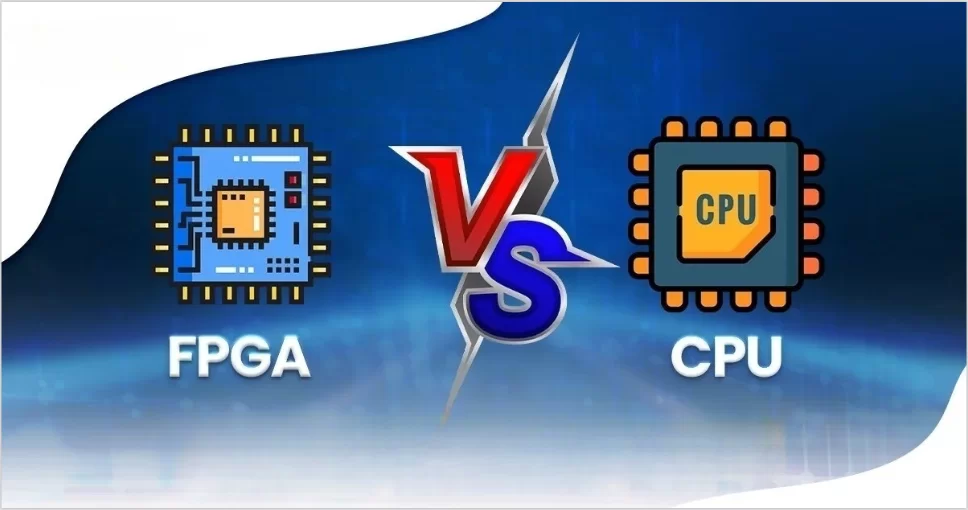The debate of FPGA vs CPU remains a significant topic for professionals and enthusiasts alike. Field-Programmable Gate Arrays (FPGAs) and Central Processing Units (CPUs) are fundamental components in the design and operation of electronic systems, each with unique characteristics, advantages, and applications. Understanding the differences and appropriate use cases for each can provide deeper insights into their roles in modern computing.
Introduction to FPGAs and CPUs
What is a CPU?
A Central Processing Unit (CPU) is often referred to as the "brain" of a computer. It is a general-purpose processor designed to execute a wide variety of tasks dictated by software instructions. CPUs are characterized by their ability to perform sequential processing tasks at high speeds, thanks to advanced architectures and high clock rates. Modern CPUs feature multiple cores, allowing them to handle parallel processing to some extent.
What is an FPGA?
A Field-Programmable Gate Array (FPGA) is a type of digital integrated circuit that can be configured by the user after manufacturing. This programmability allows FPGAs to be customized for specific tasks or applications. Unlike CPUs, FPGAs offer parallel processing capabilities inherently through their architecture, which consists of an array of programmable logic blocks and interconnects. This structure enables the creation of custom hardware circuits tailored for particular functions.
FPGA vs CPU:computational efficiency
CPUs excel at tasks that require sequential processing and where instructions depend heavily on the results of previous instructions. Their high clock speeds and sophisticated architectures make them suitable for general-purpose computing tasks.
FPGAs offer superior performance for parallel processing tasks. By configuring multiple logic blocks to operate simultaneously, FPGAs can perform numerous operations in parallel, leading to significant performance gains in specific applications such as digital signal processing, real-time data processing, and custom computing tasks.

FPGA vs CPU
FPGA vs CPU :Application Areas
When to Use a CPU
CPUs are ideal for a wide range of applications due to their versatility and ease of use:
General Computing: Desktops, laptops, and servers.
Operating Systems: Running complex operating systems that manage various applications and hardware.
Software Development: Environments where flexibility and frequent updates are required.
Data Processing: Tasks that benefit from high-speed sequential processing and multitasking capabilities.
When to Use an FPGA
FPGAs are suited for applications that demand high performance, low latency, and parallel processing:
Signal Processing: Real-time audio, video, and image processing.
Telecommunications: Network infrastructure requiring high-speed data transfer and processing.
Custom Hardware Solutions: Applications where hardware needs to be tailored for specific tasks, such as aerospace and defense.
Prototyping: Rapid development and testing of hardware designs before moving to ASIC production.
FPGA vs CPU:Development and Implementation
Developing applications for CPUs typically involves high-level programming languages such as C, C++, and Python. These languages, along with extensive libraries and development tools, allow for efficient software development, debugging, and deployment. The widespread use of CPUs and their compatibility with various operating systems make them a convenient choice for many developers.
FPGA development requires a different approach, often involving hardware description languages (HDLs) such as VHDL or Verilog. The process includes:
Design Entry: Writing HDL code to describe the desired hardware functionality.
Simulation: Testing the design through simulations to verify correctness.
Synthesis: Converting the HDL code into a netlist that can be mapped to the FPGA's logic blocks.
Place and Route: Assigning specific logic blocks and routing paths within the FPGA.
Configuration: Loading the design onto the FPGA for implementation.
This process can be more complex and time-consuming than CPU software development, but the resulting performance gains can be substantial for certain applications.
Cost Considerations
CPUs are mass-produced and benefit from economies of scale, making them relatively cost-effective for general-purpose computing. The total cost of ownership includes not only the CPU itself but also associated components such as memory, storage, and cooling systems. However, for large-scale data centers or specialized applications, high-performance CPUs can become expensive.
FPGAs can be more expensive than CPUs, especially for high-performance or large-scale models. The cost includes the FPGA chip, development tools, and potentially higher initial development costs due to the complexity of FPGA design. However, for applications that require custom hardware solutions or high-performance parallel processing, the investment in FPGAs can be justified by the performance benefits and power efficiency.
Future Trends and Developments
Advances in CPU Technology
CPUs continue to evolve with advancements in semiconductor technology, architecture improvements, and integration of specialized processing units. Trends such as multi-core processors, increased cache sizes, and enhanced instruction sets aim to boost performance and energy efficiency.
Advances in FPGA Technology
High-Level Synthesis (HLS): Tools that allow developers to write FPGA designs using high-level programming languages like C++.
Integration of Hard Blocks: Inclusion of dedicated hardware blocks, such as ARM processors and high-speed transceivers, within FPGAs to enhance functionality and performance.
Improved Development Tools: Enhanced simulation, synthesis, and debugging tools that streamline the FPGA design process.
In conclusion, the choice between FPGA vs CPU depends heavily on the specific requirements of the application. CPUs offer versatility, ease of development, and are suitable for a wide range of general-purpose tasks. FPGAs provide unparalleled performance for specialized, high-speed, and parallel processing applications, albeit with a steeper learning curve and potentially higher costs.